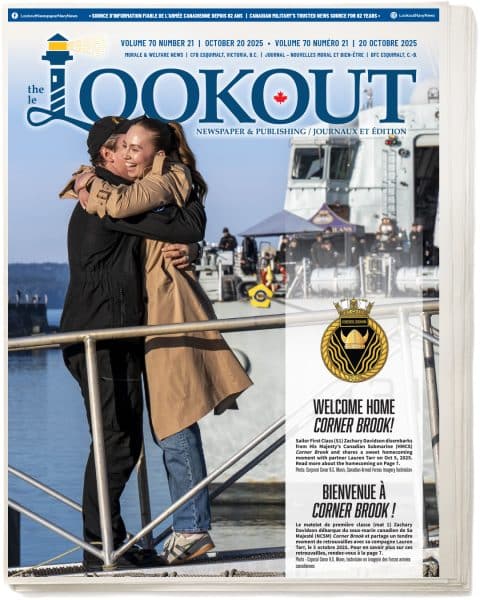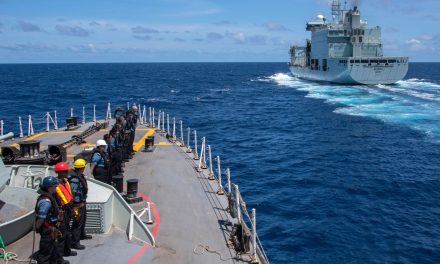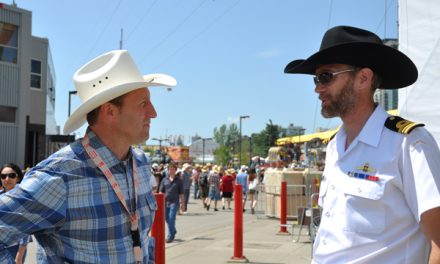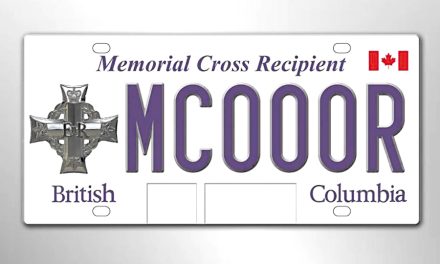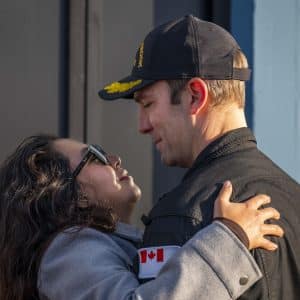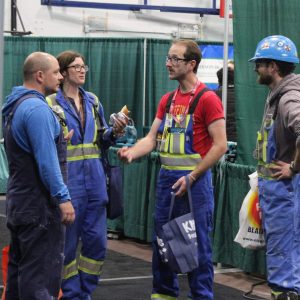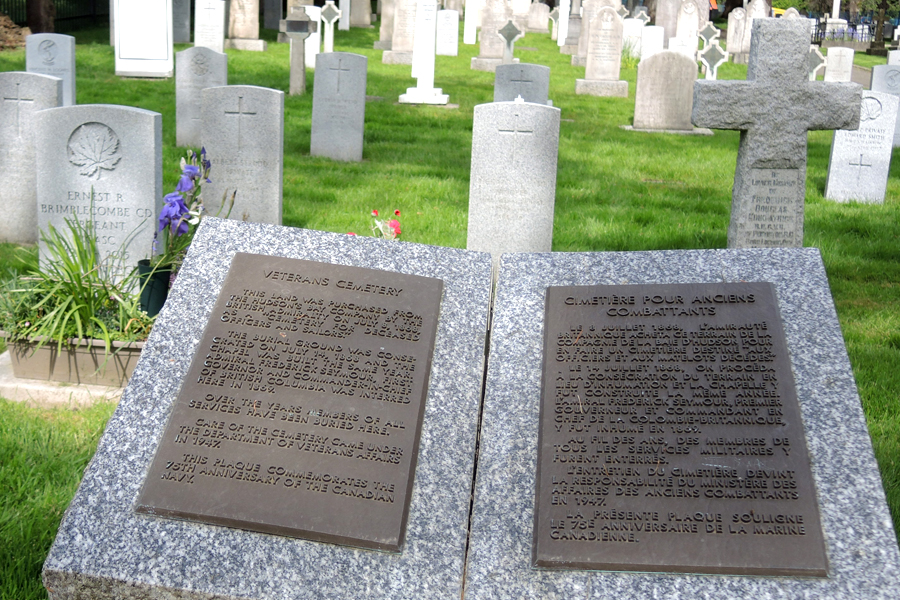
A view of the main entrance at Veterans Cemetery in Esquimalt, May 9. Photo by Peter Mallett, Lookout Newspaper
John Azar, Contributor ~
Visiting the Esquimalt Military Cemetery (God’s Acre), or any other cemetery, is like walking into a library. Looking at the rows and rows of markers, can be compared to looking along bookshelf after bookshelf; each marker is like the cover of a storybook.
Most of the stories are known only to the families of the person buried there, and many stories are unknown to all. But when the stories are researched and told, a cemetery becomes a “remembering place.” When we remember the stories, we are honouring the veteran and learning from their experiences.
Once a year, or by special arrangement, some of these stories come to light during the annual Remembrance Week tour conducted at God’s Acre for the Old Cemeteries Society of Victoria. On the Sunday closest to Remembrance Day (Nov. 5 this year) at 2 p.m. the stories of 10 to 12 people are told.
The tour includes stories about people buried at God’s Acre and stories of veterans buried in other regional cemeteries. Many of the regional cemeteries do not have enough veteran burials and stories to fill a public tour.
Also, during the centenary years of the First World War, people with ancestors who served are invited to share their relative’s story no matter where the person is buried.
Invitation
If you would like to tell the story of a family member (grandfather, great-uncle, cousins, etc.) who served in the First World War, regardless of where they are buried or what country they served, please contact me: jazar@wfapacificcoast.org.
Remembering Places of Those Who Served
Those who visited military cemeteries in Europe are awed by the rows of markers in well-tended cemeteries, or seeing thousands of names inscribed on memorials such as the Vimy Memorial in France or the Menin Gate in Ypres, Belgium. We tend to form the impression that all those who served have similar grave markers in similar cemeteries.
Unfortunately, that is not the case.
Most cemeteries where Canadian veterans are buried in Europe are operated by the Commonwealth War Graves Commission (CWGC). The burials in CWGC cemeteries and the inscriptions on the memorials are restricted to those who are defined as “war dead” from the First and Second World Wars. A deceased person is “war dead” if he or she died within a defined period from the outbreak of war until a specified cut-off date after each war. These dates are:
- First World War: Aug. 4, 1914 – Aug. 31, 1921
- Second World War: Sept. 3, 1939 – Dec. 31, 1947
These dates apply to those who died in service, regardless of how or where they died. Many “war dead” did not go overseas. So, the enlisted man from Victoria who died in a hunting accident before going overseas is “war dead”, while a decorated soldier who died after the cut-off date is simply a veteran. All who served are veterans, but only those who died within the defined dates are “war dead.”
The families of veterans who died after the cut-off dates were generally left to their own devices for burials and place markers. Some were able to take advantage of means-tested financial assistance through the Last Post Fund supported by Veterans Affairs Canada. (For information on the programs of the Last Post Fund, visit their website: www.lastpostfund.ca)
But most veterans were buried in family plots with non-military markers, or no markers at all.
Looking only at the First and Second World Wars, approximately 658,000 Canadians served in the First and just over a million served in the Second for a rough total of 1,658,000. The number of “war dead” for the First World War is about 68,000 (10 per cent of those who served) and for the Second 46,000 (4.5 per cent of those who served) for a total of approximately 114,000 “war dead.”
This means approximately 1,500,000 veterans from the First and Second World Wars are buried in over 2,500 non-military cemeteries throughout Canada. While some of these cemeteries have military sections, most veterans are buried in family plots.
There are over 35 cemeteries in Greater Victoria and the Cowichan Valley (many are no longer active). Each cemetery is a remembering and honouring place with at least a few veteran’s stories.
By telling a few of those stories at God’s Acre, we promote this hidden jewel of a cemetery, while honouring veterans whose stories might otherwise not be told.
For more information on Nov. 5 tour, visit the Old Cemeteries Society of Victoria’s website: www.oldcem.bc.ca/tour.htm
John Azar is an amateur military historian and chair of the Western Front Association–Pacific Coast Branch that is focused on First World War history
(www.wfapacificcoast.org). He also leads military history tours for the Old Cemeteries Society of Victoria. He can be contacted at: jazar@wfapacificcoast.org
